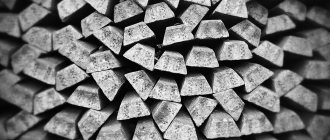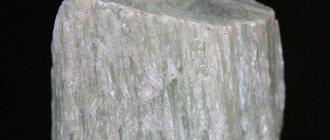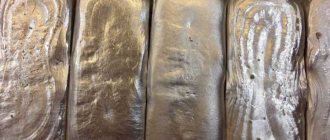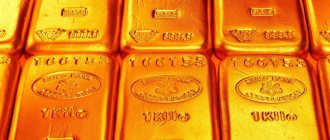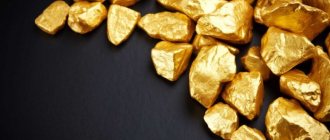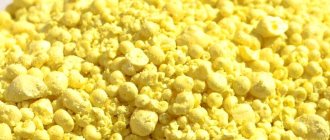According to the US Geological Survey, global silver reserves amount to 512 thousand tons, and the largest reserves of this precious metal are found in countries such as
- Peru (23%),
- Chile (14%),
- Australia and Poland (14% each),
- China (8%),
- Mexico (7%),
- USA (5%).
According to experts, these world reserves should be enough for another 22 years. It should be noted that silver has excellent technical characteristics and is widely used in industry. And the demand for it has not only exceeded supply for a long time, but is also growing as predicted. In addition, according to analysts, crisis processes in the global economy as a whole and at the level of national economies will lead Central banks to increase the monetization of debt, which, in turn, will aggravate inflationary processes. And this will contribute to an increase in the value and demand for shares of mining companies. Let us note that silver is also an independent tool for long-term investment and preservation of one’s capital. According to experts, the price of one ounce of silver will soon reach over $50. The largest silver mining companies are INDUSTRIAS PENOLES, as well as BHP and AURUBIS, their combined share of global production is over 25%. More than 22 thousand tons of silver are mined annually in the world (Table 1).
Table 1
Note that from 2005 to 2010, the distribution of production volumes between the countries included in the top 5 countries for silver production changed slightly: the first three leading positions in silver production were consistently occupied by Peru, Mexico and China. The last two positions in the ranking were alternately shared by Chile, Australia and the Russian Federation.
Peru 4000 tons – 2nd place
Peru, which accounted for 17% of global silver production in 2011, took second place, losing the lead it had held for more than six years. There are 784 silver mines in this country. As of 2012, Peru has proven but unmined silver reserves of 120 thousand tons. The surge in large-scale mining in Peru began in 1991, when the government introduced and legislated a number of measures to simplify and stimulate the activities of companies in this industry. These measures included tax preferences, simplification of obtaining the necessary licenses, etc.
Peru's mining industry is largely developed by attracting foreign investors - 75% of companies are owned by foreign capital. Such high investment attractiveness is associated with the liberal incentive policy of the Peruvian government. Foreign capital is primarily attracted by Peru's open market economy, which is convenient for doing business.
At the same time, the national government provides guarantees of safety and protection to investors, and also ensures that they can freely repatriate capital and profits from Peru to the investor’s home country, as well as equal opportunities for both national and foreign companies.
The authorities provide conditions for the free conduct of financial transactions, simplify the taxation system, liberalize the conditions for foreign investment, reduce subsidies for national producers, ensuring equal competitive conditions. Optimizes the conditions for creating and managing industry infrastructure. Such a comfortable investment climate has allowed foreign mining companies in Peru to actively develop their activities, both in extensive and intensive directions. Thus, in the current year 2012, a number of silver mining companies have planned to increase production.
As part of the Ninobamba project, owned by Rio Silver Inc, a new geological exploration program is starting. In turn, the leader of the silver mining market in Peru, Pan American, officially announced the planned intensification of mining work at four mines owned by the company. Also, the additional increase in production is due to the modernization of the mining project of Minera Antamina SA.
Extraction methods
The first information about mined silver dates back to the seventh millennium BC (in the Syrian region).
For a long time, people could only search for silver nuggets, so it was valued very highly, often more than gold. Now metallurgical production has perfectly mastered the extraction of precious metal from both pure silver and polymetallic ores.
Depending on the depth of occurrence of silver-containing ores, the method of their extraction is chosen. The open-pit method of silver mining is suitable if the ore is close to the surface of the earth. The closed method is used for deep burial.
Mexico 4500 tons – 1st place
Based on the results of 2011, the world leader in silver production is Mexico, which in 2011 accounted for 19% of global production. Despite the government's war with the largest drug cartels, Mexico's mining companies have the greatest development potential compared to companies in other countries. They are characterized by a high level of profitability and positive financial statements. The tense situation within the country, of course, is an additional risk factor, but this socially dangerous trend has so far hardly affected the efficiency of mining companies in Mexico.
Thus, the value of silver, both in the industrial sphere and as a means of profitable and reliable investment of capital, was underestimated. At the moment, buying silver bars or shares of mining companies can be a very successful investment decision. Since only silver in the form of .999 fine bullion can be used in industry, their supply is declining exponentially due to excessive technological consumption, and cannot be adequately replenished, even taking into account the ever-increasing volumes of its global production.
Silver extraction methods
Today, silver nuggets are found less frequently. Production varies:
- mine (underground) - a system of galleries is created;
- quarry or open (above ground) - massive trenches are dug;
- borehole - a drill is used to extract ores;
- marine (below sea level).
For silver, mining is more often used. They also resort to the quarry method and develop the borehole method. Ore is extracted through the following steps:
- drilling holes and laying explosives;
- raising fossil fragments to the surface;
- thorough examination of the ore;
- crushing rock using a special crusher.
The element must be isolated from the mined ore. This is done using cyanidation or amalgamation.
Cyanidation
This technique involves a tandem of oxygen and cyanide - these components do not work separately. It is used for rock processing, the target raw material is dissolved.
The next stage is filtering. Using zinc powder, a precipitate is obtained, which is fused. The processing does not end there - complete cleansing of impurities is necessary. This is done in specialized factories.
Amalgamation
Mercury is used for processing. The ore is exposed to temperatures of 1000 °C. The raw material is melted and chemicals are added to prevent the precious metal from burning out.
Then the heat treatment is repeated so that the liquid evaporates. All metals contained in the ore are melted. The process takes 4 hours. The silver is poured into molds and it cools in just 5 minutes.
The resulting ingots are compared with the standard. This is done to determine the sample.
Enrichment methods
To separate silver from the host rock, the silver-containing rock mass selected from a mine or quarry is crushed in a crusher (this is an industrial unit for grinding solid materials). The crushed rock is further subjected to either amalgation or cyanidation. In the first case, silver is dissolved in mercury, in the second, it is mixed with a compound of hydrocyanic acid (cyanide), followed by the release of “pure metal”. Both methods are extremely dangerous to human health due to the toxic properties of mercury and cyanide, so workers are forced to protect their respiratory organs.
The beginning of gold mining in Transbaikalia
Peter I paid great attention to financial issues. It was during the years of Peter’s active activity that the mining industry began to be created in Siberia, more precisely, in Transbaikalia and Altai.
In the 18th century, Eastern Transbaikalia became one of the major centers for the extraction of silver-containing ores, the production of silver and lead, and at the same time gold mining was carried out here in small quantities. Eastern Transbaikalia cannot be called either a typical Siberian taiga or steppe. Here there is an alternation of landscapes, a change from one natural zone to another. Mountain ranges give way to vast plains, taiga to steppe, and even sandy deserts. All this creates a unique landscape, which is like a transition from the Siberian mountain taiga to the endless steppes and deserts of Central Asia.
Along the valleys of the Shilka and Argun rivers, their tributaries, in mountain gorges and in the taiga wilderness, numerous deposits of silver-lead ores were discovered, and mining villages were built. At first they were populated by civilian mine workers, then assigned peasants were transferred here, and from the second half of the 18th century. these villages basically turned into convict prisons.
The working day dragged on endlessly. There was no mechanization at the mines. A crowbar, a pick, a hammer, a sledgehammer, a sled - these were all the simple mining tools of those years. Ventilation was very poor and drainage was difficult. The mines were always heavily watered and very poorly ventilated. Constantly wet, dirty, tired to the point of exhaustion, the miners of these mines thought only about how to get some rest. The mining administration consisted mainly of foreigners. A stick, a whip and certain death awaited anyone who showed even the slightest disobedience. In such incredibly difficult conditions, convicts and assigned peasants mined non-ferrous and precious metals in Siberia.
Discovery of alluvial gold deposits in Transbaikalia
In the first half of the 19th century, the administration of factories in various mining areas focused on organizing systematic searches for gold deposits, including placer gold. Searches for deposits of silver-lead ores were also carried out, but only deposits of particularly high quality were taken into account. The first, most interesting discovery of a gold deposit in Transbaikalia was made by search parties led by mining officer Pavlutsky in 1838. They discovered a large placer of gold with a length of 14 miles, located on the Kara River, which flows into the Shilka, and in 1850 the even larger Shakhtaminskaya placer about 17 versts long. In 1854, mining specialists discovered placers of gold in a more northern area adjacent to the slopes of the Yablonovy Ridge. In 1863, along the Black Uryum River in the Shilka basin, mountain officer Cherkasov discovered a placer over 11 miles long. As a result of numerous discoveries of alluvial gold deposits in Transbaikalia from 1851 to 1865, 1203 poods 33 pounds of pure gold and 69 poods 35 pounds of silver were extracted from placers, i.e. almost 100 times more than in the entire previous century. Ore deposits during this period yielded 311 poods 9 pounds of silver and 1 pood 8 pounds of gold.
Employees of the Mikhailovsky mine in Darasun
A comparison of the amount of metal extracted from placers and from ore deposits convinced the administration of the Nerchinsk plant of the need to limit production from ore deposits and sharply increase it from placers. In this regard, in 1850, the plant administration decided to limit the smelting of silver to 100 pounds and lead to 15 thousand pounds, with 5 thousand pounds of lead intended for free sale to residents of Eastern Siberia, in particular to hunters hunting valuable furs. A mass of workers from the mines was sent to the placers. Thus, the discovery of gold in Transbaikalia and the acceleration of its extraction had a detrimental effect on the development of other branches of non-ferrous metallurgy in this area. At first, their growth was stopped, and then, given the complexity of ore extraction in the mines, it was completely stopped.
Metal cleaning
- The ore is placed in a tank and treated with zinc dust. As a result, all impurities settle to the bottom, while the target raw material remains at the top. Subsequent cleaning is carried out in factories.
- The pyrometallurgical method produces pure silver. Copper or lead should be used as concentrators. These substances are treated with zinc at a temperature of 450 degrees - this way the metal particles dissolve better. After extracting the frozen substance, the precious metal is separated from it.
- At 1250 degrees, the zinc evaporates, but the remaining silver still contains arsenic and lead. For cleaning, oxygen treatment and heat exposure of 1000 degrees are used. This method is the most profitable, since lead and copper are mined in large quantities. Recycling such elements does not require significant costs.
- The purified precious metal is melted into ingots. No technology can guarantee 100% pure silver. To completely get rid of impurities, the ingots are transported to metallurgical plants for further processing.
If copper or lead is used as the main raw material, a pyrometallurgical purification technique is used. This method is advantageous because these impurities are inexpensive. As a result, the cost of the production process decreases, and the costs of producing less expensive metals are recouped. Electrochemical purification technology is used to separate silver.
